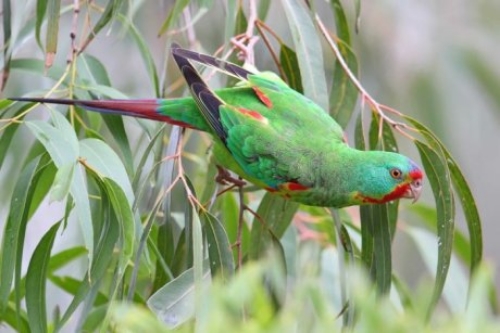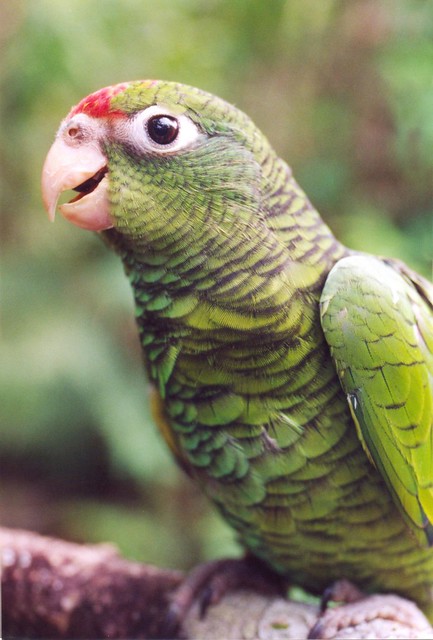Otatara pest control efforts paying off
 Thursday, September 10, 2015 at 12:49
Thursday, September 10, 2015 at 12:49  Nestor meridionalis - Kaka | in
Nestor meridionalis - Kaka | in  Conservation,
Conservation,  Urban parrots
Urban parrots
 Thursday, September 10, 2015 at 12:49
Thursday, September 10, 2015 at 12:49  Nestor meridionalis - Kaka | in
Nestor meridionalis - Kaka | in  Conservation,
Conservation,  Urban parrots
Urban parrots  Thursday, September 10, 2015 at 12:32
Thursday, September 10, 2015 at 12:32  The swift parrot breeds in Tasmania and migrates north to south eastern Australia from Griffith-Warialda in New South Wales and west to Adelaide in the winter. Image by CHRIS TZAROS
The swift parrot breeds in Tasmania and migrates north to south eastern Australia from Griffith-Warialda in New South Wales and west to Adelaide in the winter. Image by CHRIS TZAROS
Forestry Tasmania is being urged to stop logging in 3 per cent of its native forest logging area because it is habitat for the endangered swift parrot.
 Wednesday, September 9, 2015 at 13:03
Wednesday, September 9, 2015 at 13:03  Wednesday, September 9, 2015 at 12:56
Wednesday, September 9, 2015 at 12:56  Tucuman Parrots like this one require tree cavities and access to pino blanco seeds to successfully reproduce. Credit: L. Rivera The Tucuman Parrot (Amazona tucumana) is found only on the eastern slopes of the Andes in Bolivia and Argentina, in a region known as the Southern Yungas forest. In the 1980s, its population suffered a severe decline due to capture for the pet trade, and it has never recovered. Conservation efforts have focused on protecting swaths of Southern Yungas habitat, but new research published in The Condor: Ornithological Applications highlights the ways in which this strategy may fall short. Anna Pidgeon of the University of Wisconsin-Madison and her colleagues found that only 19% of the Southern Yungas is actually suitable breeding habitat for these parrots, and only 15% of breeding habitat is under any form of protection. Not all Southern Yungas forest is the same, and protecting habitat can only work if it includes what Tucuman Parrots actually need to successfully reproduce: tree cavities to nest in, and plenty of mature pino blanco (Podocarpus parlatorei), the evergreen trees whose seeds are the primary food for the nestlings.
Tucuman Parrots like this one require tree cavities and access to pino blanco seeds to successfully reproduce. Credit: L. Rivera The Tucuman Parrot (Amazona tucumana) is found only on the eastern slopes of the Andes in Bolivia and Argentina, in a region known as the Southern Yungas forest. In the 1980s, its population suffered a severe decline due to capture for the pet trade, and it has never recovered. Conservation efforts have focused on protecting swaths of Southern Yungas habitat, but new research published in The Condor: Ornithological Applications highlights the ways in which this strategy may fall short. Anna Pidgeon of the University of Wisconsin-Madison and her colleagues found that only 19% of the Southern Yungas is actually suitable breeding habitat for these parrots, and only 15% of breeding habitat is under any form of protection. Not all Southern Yungas forest is the same, and protecting habitat can only work if it includes what Tucuman Parrots actually need to successfully reproduce: tree cavities to nest in, and plenty of mature pino blanco (Podocarpus parlatorei), the evergreen trees whose seeds are the primary food for the nestlings.
 Sunday, August 9, 2015 at 15:05
Sunday, August 9, 2015 at 15:05